Plants In The Bedroom: Air Purifying And A Better Night's Rest
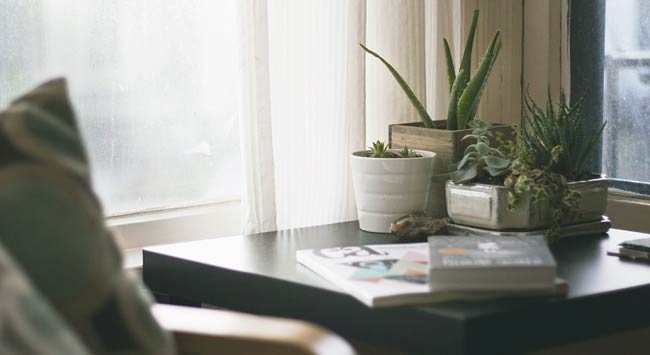
Plants In The Bedroom: Air Purifying And A Better Night's Rest
With many of us it is still completely in: no plants or flowers in the bedroom.
Because plants use oxygen at night, plants and flowers were invariably kept out of the bedroom.
Even hospitals put plants and flowers in the hallway at night, so that the patients would not suffer.
This theory has since become obsolete.
In fact, you do well to put certain plants in your bedroom!
Research on Plants and Air Quality
NASA conducted research into the use of indoor plants in the 1980s to improve air quality.
A solution had to be found for the problem of contaminated air in space travel capsules.
The research showed that certain plants can be used well to improve the quality of the indoor air.
There are certain chemical compounds that can be broken down by these plants.
How Then Does Oxygen Work?
It is known that most (but not all) plants use oxygen at night and release oxygen during the day.
That is why plants and flowers were also kept out of bedrooms at night.
Research has shown that the average plant only takes 50 milliliters of oxygen from the air at night.
That is actually negligible, if you consider that we use an average of 550 liters of oxygen per day.
Clean The Leaves Weekly
Make cleaning the leaves of the plants part of your routine. Not only the plants in your bedroom, but also in the rest of the house, you can keep dust-free.
This way you also have the chance to remove dead leaves.
The houseplants can do their work better if they have clean leaves. In addition, it is also more cared for. Beautiful green leaves, right?
Plants In The Baby Room And Children's Room
In the nursery or child's bedroom, you can also put plas for better air quality.
Of course you have to make sure that the children can not easily push or pull the plant (accidentally) and suddenly a black pot is broken on the ground.
So be careful with the drop.
The following plants are best suited for the nursery and nursery:
By clicking on the links, you can read more about the plant.
Spathiphyllum (Spoon plant) ;
Crassula ovata;
Chlorophytum comosum (Grass lily) .
Plants That Purify The Air (In The Bedroom)
Today, a number of plants are known to contribute to better air quality. Examined by NASA.
Chrysalidocarpus lutescens (Areca Palm)
This is a shrub-shaped room palm. He humidifies the air and removes toxic substances. This plant is easy to maintain: keep it moist, not too wet and spray regularly.
Apart from filtering the toxins of formaldehyde, benzene, trichlorethylene and toluene from the air, he produces a lot of oxygen during the day.

Source photo: https://www.lawnkart.com/products/areca-palm
Sanseveria (Female Tongues)
This plant owes its nickname 'Female Tongues' to the sharp ends of the leaves. In the 70s he was very popular and he now seems to be on the rise again.
In contrast to most plants, this decorative plant mainly produces oxygen at night.

Photo source: https://exoticflora.in/products/mother-in-laws-tongue-or-snake-plant-indoor-air-purifying
Epipremnum Aureum (Scindapsus)
This tropical hanging plant is family of the Dieffenbachia, requires little maintenance and can easily be kept in a dark place.
When he gets too little water, the leaves will hang limp. As soon as he gets water again, the leaves will recover quickly.
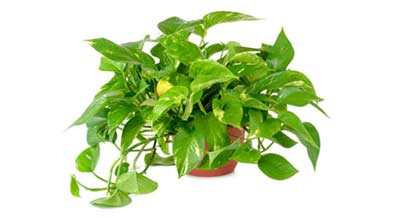
Source photo: https://www.etsy.com/listing/509615825/pothos-plant-devils-ivy-epipremnum
But there are more air purifiers
Ficus robusta (Fig plant)
The care of this plant is simple. He loves the sun, he grows the best. Do turn around now and then, so that he grows straight.
Do not give too much water. The soil of the plant must be moist, but not completely wet.

Source photo: https://kannike.eu/en/e-poe-tooted/potted-plants/ficus-robusta/?v=79cba1185463
Nephrolepis exaltata bostoniensis (Curl)
Curl ferns purify formaldehyde from the air. The care of this plant is simple. Make sure he has enough light, but do not put him in full sun.
Temperature should not be lower than 15 C °. The earth must always be moist, but not very wet. If you also occasionally spray and give a little nutrition, you have a lot of fun from your plant.
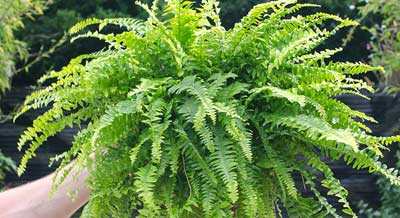
Source photo: https://www.houseofplants.co.uk/plants/nephrolepis-exaltata-bostoniensis_boston-fern_38175.html
Spathiphyllum (Spoon plant)
The Spathiphyllum, popularly called Lepelplant, is a plant from the Arum family.
This plant is ideal if you want to have an elegant, yet air-purifying plant in your home.
It is easy to maintain and does not require a lot of light. He himself indicates when it is time to give water, then the leaves go limp.
If you give it water then it will be neatly straight again within an hour. This plant is good for filtering most toxic substances in the house.
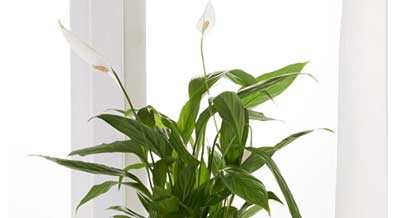
Photo source: http://www.ikea.com/gb/en/products/decoration/plants-pots-stands/spathiphyllum-potted-plant-peace-lily-art-60144901/
Hedera Helix (Ivy)
Not only can you plant the ivy outside to climb against the walls, the green climber is also suitable in the bedroom.
You can grow these against a plant rack. You can also plant and hang an ivy in a hanging pot.
Very easy in the care. Just a little water weekly and the hedera is satisfied.
Sometimes you have to cut back the ivy a bit.
The ivy can, like the Grail lily under the next cup, purify Formaldehyde from the air.
Formaldehyde is in different types of glue and other household products.

Source photo: http://www.costafarms.com/plants/ivy
Chlorophytum comosum (Grail lily)
The grass lily is a very easy plant. You only have to give a little water every week.
The plant can grow to about 60 centimeters high and has green with pale yellow leaves.
It is safe for pets and for the nursery / baby room.
The Chlorophytum comosum can extract the chemical substance from the air and purify it.
Like the ivy, formaldehyde can get out of the air.
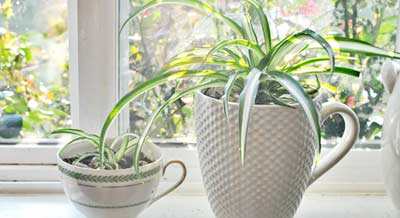
Source photo: https://www.houselogic.com/photos/yard-patio/best-plants-indoor-air-quality/slide/spider-plant-chlorophytum-comosum/
Crassula ovata (Jade Plant)
In the Netherlands this plant is called Crassula ovata, there is no Dutch name for it. In English, this fat plant is called Jade Plant.
The Jade needs very little water, just like other succulents. Only with very dry soil can you give a little water (especially in the spring).
It turns out that this Jade plant is good at removing toluene in the air. Hopefully this is not in the air in your bedroom, but it is a substance that occurs in thinner and in different types of glue.
A beautiful decorative plant that does its job well when it comes to purifying the air.

















No comments